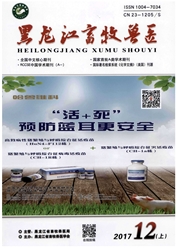

 中文摘要:
中文摘要:
本研究旨在了解活性氧(Reactive oxygen species,ROS)、发育阻滞与抗氧化物吡格列酮(Pioglitazone,PIO)之间的关系。试验分3组:对照组、H2O2处理组和H2O2+PIO处理组。通过H2O2建立小鼠胚胎氧化损伤模型,添加抗氧化物质PIO对胚胎进行氧化修复,DCHFDA测定胚胎内部ROS水平,半定量PCR测定母型-合子型胚胎内部相关母性效应基因和合子型基因的表达。结果表明:(1)1-细胞和2-细胞胚胎H2O2处理组的ROS水平明显比对照组和H2O2+PIO处理组的高(P〈0.05);(2)H2O2处理组的2-细胞向4-细胞过渡率明显比对照组和H2O2+PIO处理组低(P〈0.05),但各处理组之间1-细胞向2-细胞过渡率差异不显著(P〉0.05);(3)H2O2处理组的母性效应基因Hsf1、Zfp3612、Zp3和合子型基因Eif1-α、Zscan4d和Muerv-L的表达明显比对照组和H2O2+PIO处理组低(P〈0.05)。综上表明,氧化应激通过下调2-细胞胚胎母型效应基因和合子型基因表达,导致小鼠胚胎2-细胞发育阻滞,抗氧化物质吡格列酮可促进胚胎发育,有效克服胚胎体外2-细胞发育阻滞现象。
 英文摘要:
英文摘要:
The aim of this study was to investigate the relationship of ROS,developmental block and pioglitazone as an antioxidant.The experiment was divided into 3groups:Control group,H2O2 group and H2O2+PIO group.The oxidative damage model of mouse embryos induced by H2O2 was established and treated with or without pioglitazone.The ROS level after treatment with pioglitazone was measured by DCHF-DA and the expression of maternal effect genes and zygotic genes were analyzed by Semi-quantitative reverse transcription PCR.The results showed that:(1)the ROS level of H2O2 group was significantly higher than control group and H2O2+PIO group in both1-cell and 2-cell embryos(P〈0.05);(2)the rate of 2-cell to 4-cell transition in H2O2 group was significantly lower than control group and H2O2+PIO group(P〈0.05),while the difference of 1-cell to 2-cell transition rate among the groups was not significant(P〉0.05);(3)the expression of maternal effect genes(Hsf1,Zfp3612,Zp3)and zygotic genes(Eif1-α,Muerv-L,Zscan4d)in H2O2 group was lower than control group and H2O2+PIO group(P〈0.05).The results provided a clear molecular aspect regarding the mechanism by which pioglitazone promoted embryos development and overcome 2-cell block.
 同期刊论文项目
同期刊论文项目
 同项目期刊论文
同项目期刊论文
 期刊信息
期刊信息
